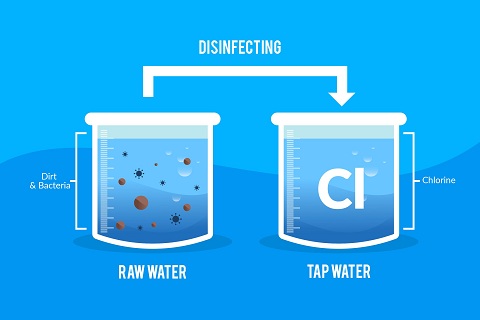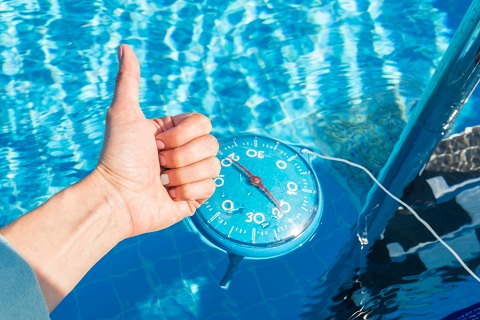Maintaining the correct alkalinity in your pool is crucial for ensuring clean, safe, and pleasant swimming conditions. High alkalinity can cause a range of issues, from cloudy water to scaling on pool surfaces and equipment. This comprehensive guide will walk you through the steps to effectively lower the alkalinity in your pool, ensuring it remains in optimal condition.
Understanding Pool Alkalinity
Alkalinity in your pool refers to the concentration of alkaline substances, mainly bicarbonates, carbonates, and hydroxides, in the water. It is measured in parts per million (ppm), with the ideal range being between 80 and 120 ppm. High alkalinity can lead to several issues, including:
- Cloudy Water:
High alkalinity can cause calcium and other minerals to precipitate, leading to cloudy water.
- pH Balance Problems:
Elevated alkalinity can make it difficult to maintain a stable pH, causing the water to become either too acidic or too basic.
- Scaling:
Excess minerals can deposit on pool surfaces and equipment, forming unsightly and damaging scales.
Testing Your Pool’s Alkalinity
Before attempting to lower the alkalinity in your pool, it’s essential to test the current levels. You can use either test strips or a liquid test kit. Follow these steps for accurate testing:
- Collect a Water Sample:
Using a clean container, collect a sample of pool water from about elbow-depth.
- Use Test Strips or Kit:
Dip the test strip into the water and compare the color change to the provided chart. If using a liquid kit, add the reagent to the water sample as instructed and compare the resulting color.
- Read the Results:
Determine the alkalinity level from the chart. If the reading is above 120 ppm, it’s time to take action to lower it.
Materials Needed to Lower Alkalinity

To effectively lower the alkalinity in your pool, you will need the following materials:
- Muriatic Acid or Sodium Bisulfate: These chemicals are commonly used to reduce alkalinity.
- Protective Gear: Gloves and safety goggles to protect yourself from chemical splashes.
- Pool Brush: For distributing the acid evenly throughout the pool.
- Test Kit or Strips: To monitor alkalinity levels during the process.
Step-by-Step Guide to Lowering Alkalinity
Step 1: Calculate the Required Amount of Acid
The amount of acid needed depends on the pool size and the current alkalinity level. Generally, for every 10,000 gallons of water, 1.5 quarts of muriatic acid will reduce the alkalinity by approximately 10 ppm. Consult the manufacturer’s instructions for precise dosages.
Step 2: Add the Acid to the Pool
- Turn Off the Pool Pump: To prevent the acid from being circulated immediately.
- Dilute the Acid: If using muriatic acid, dilute it in a bucket of pool water. For sodium bisulfate, follow the product instructions.
- Distribute the Acid: Slowly pour the acid around the perimeter of the pool, avoiding the skimmer and jets.
Step 3: Wait and Brush the Pool
Allow the acid to disperse and lower the alkalinity. This typically takes about an hour. After waiting, use a pool brush to gently stir the water and help the acid mix thoroughly.
Step 4: Test the Alkalinity Level Again
After allowing the acid to circulate for at least 24 hours, retest the alkalinity level. If the desired level has not been reached, you may need to repeat the process.
Additional Tips for Maintaining Alkalinity

- Regular Testing: Frequently test your pool water to keep track of alkalinity and pH levels.
- Proper Circulation: Ensure your pool’s circulation system is functioning properly to evenly distribute chemicals.
- Balanced Chemical Levels: Always maintain balanced chlorine, pH, and calcium hardness levels to prevent fluctuations in alkalinity.
Preventing High Alkalinity in the Future
To avoid repeated issues with high alkalinity, consider these preventive measures:
- Use Alkalinity Increaser Sparingly: Only add alkalinity increaser as needed to avoid overshooting the ideal range.
- Monitor Fill Water: Test the alkalinity of your fill water, as it may be contributing to high alkalinity levels.
- Consistent Pool Maintenance: Regular cleaning and maintenance will help keep your pool water balanced and prevent chemical imbalances.
FAQs About Pool Alkalinity
High alkalinity is often caused by the addition of too much alkaline substances, such as bicarbonates, during the pool’s chemical balancing process. It can also be influenced by the alkalinity of the fill water used to top off the pool.
Yes, high alkalinity can cause scaling on the pool’s surfaces and equipment, leading to costly repairs and replacements. It can also make it difficult to maintain a stable pH, resulting in uncomfortable swimming conditions and potential skin irritation.
It’s recommended to test your pool’s alkalinity at least once a week during the swimming season. Regular testing helps catch imbalances early and ensures prompt corrective action.
Conclusion
Maintaining the right alkalinity level in your pool is essential for keeping the water clear and safe, and enjoyable. By following the steps outlined in this guide, you can effectively lower high alkalinity and prevent future issues. Remember to test regularly, use chemicals responsibly, and keep up with routine pool maintenance for the best results.

